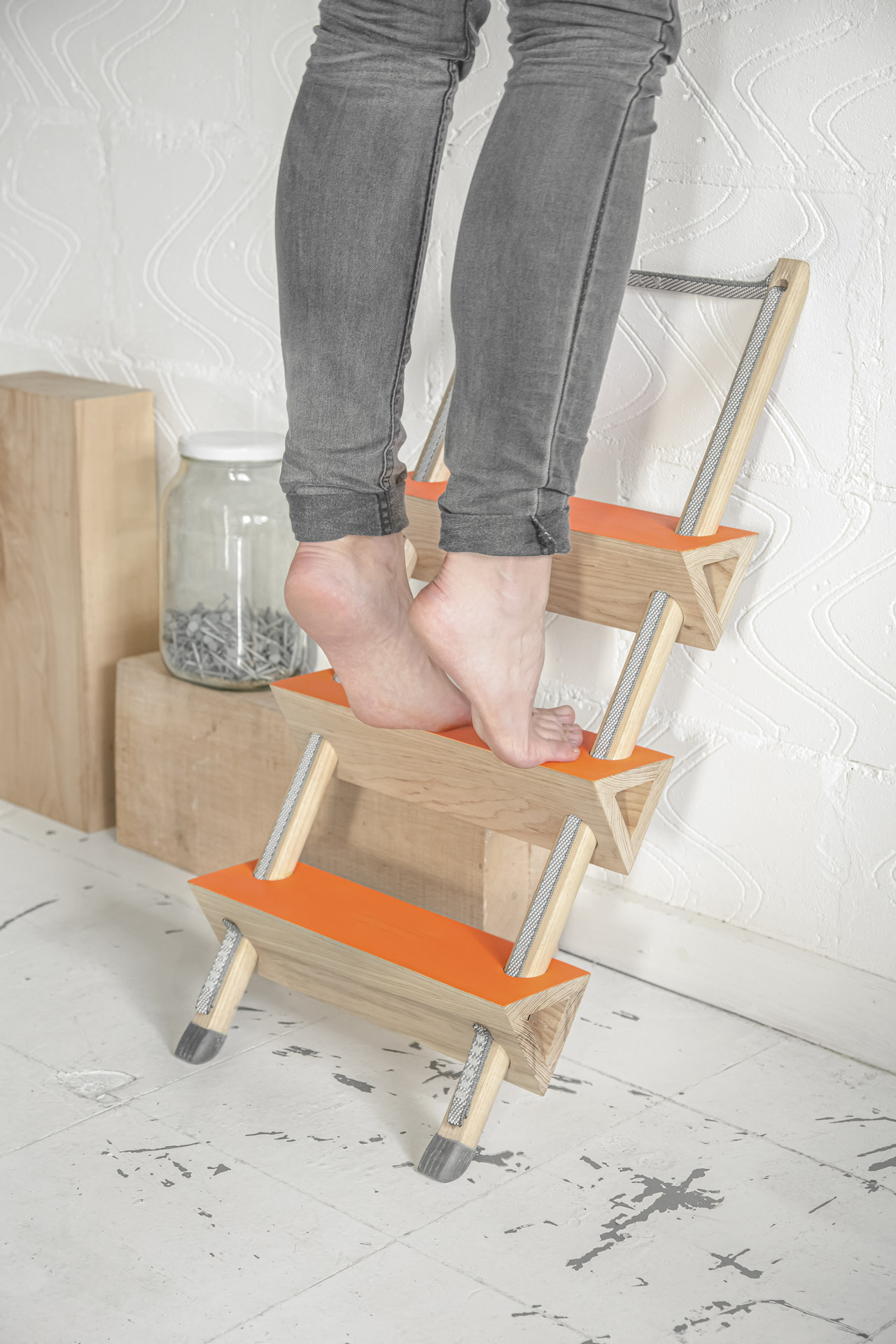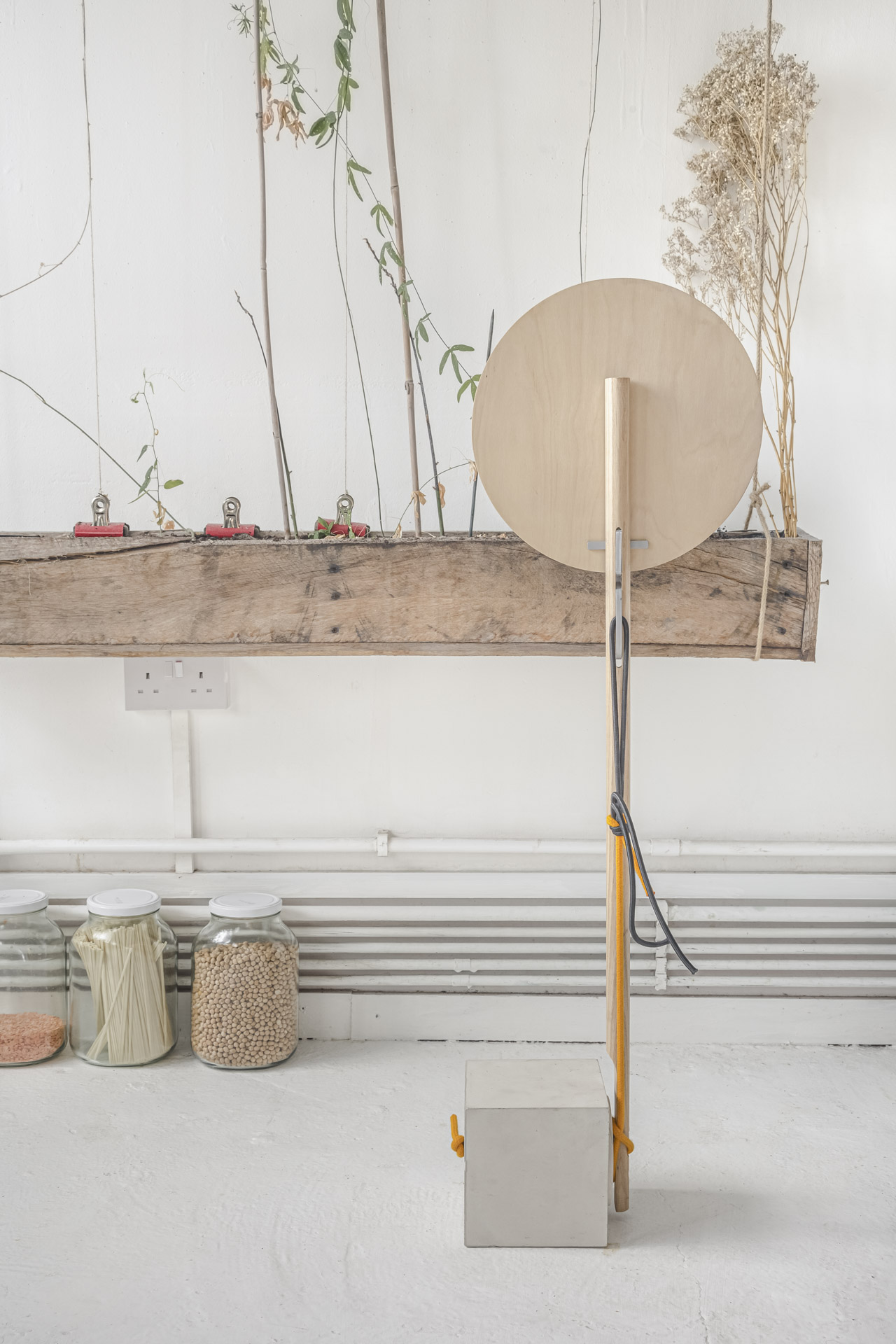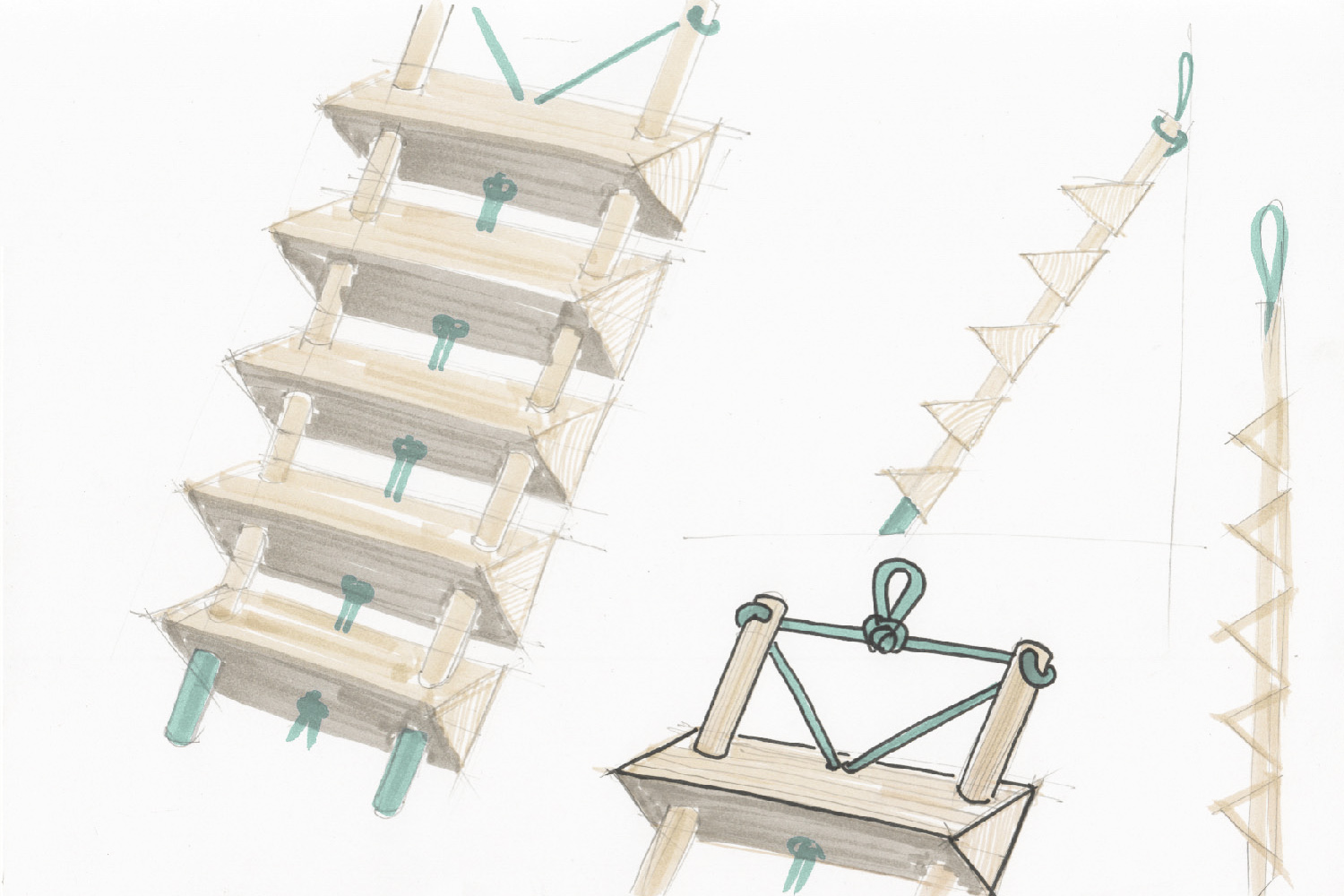ON & OFF series
Most objects have an ON state only. They remain active and available. Some objects have ON and OFF states. They can deactivate, they can shift form and function. This project explores this dual ability in furniture scale.
Royal College of Art graduation project MA Design products with Mireia Gordi i Vila.

Sling step ladder
This ladder study demonstrates a very simple ON and OFF state switch. When in use it is simply resting against a wall or furniture and when not in use it is somewhere aside ideally hanging on a hook. It is an object of simple accessible functionality.
The design is a classic harmony of pressure and tension in contrasting materials. The wood takes all the pressures and the rock-climbing sling handles the tensions on. There are no traditional joints here, the parts are held together by the sling as it winds its way through the wood pieces. The parts are actually loose and they move around a little. As you put weight on the steps the sling tightens and everything gets strongly connected. It feels as if the ladder relaxes when not in use and gets structural on demand. Actually the more loaded it is the stronger it gets.

ON



OFF

Swing side table
Here the ON and OFF states happen in a more delicate and automated way. The concrete base of the table features a mechanism that extends into the vertical arm and causes the table to swing upright into a flat roadsign kind of look. Once you flip the table down and you put anything on it the weight is enough to keep it horizontal and strong. It is though always ready to turn itself OFF when you remove the last object from the plywood surface. In other words it is only a table when it needs to be a table.
The design features plywood, solid ash wood, a woven rope, silicone elastic cord, anodized aluminium, concrete, PTFE plastic, steel springs and Jesmonite™. It is a listing of well-fitted parts that get orchestrated together to perform the ON and OFF animation. Some functional parts are inside, some outside. The design language is an unexpected sum of intelligent parts that each play a purpose and none conform to any overall styling. It is an object of essence and beautiful logic that becomes lively and quirky when you interact with it.

OFF

ON


The more roles and states an object can have the better it is. It can adapt, it can respond and be part of many scenarios.
Process #1 – the locking knot
This design process explored two parameters at once from the early begining: an unusual unorthodox construction in furniture terms and the mentioned ON/OFF abilities. We created a range of rough models, most of the development work was 1:1 as there you are in the best position to judge and test ideas and compare them to other designs, let people try them and so on. A direct methodology.










Process #2 – the clockwork concrete
This process sequence shows the research, models and final component production for the Swing side table. As mentioned before this design mixes a very broad range of materials and all had to be harmonized to work together. The molding systems were especially fun to produce using very simple materials ideal for a small series. The resulting mechanism is smooth and automatic responding exactly to how loaded the table surface is.
Our collaboration with Mireia was unique in the sense that each of us designed and produced a section of the final object without that much consideration for the overall looks. It was a case of building the side table from parts that have a clear relationship rather than looking at the design as a complete form first – which is what most design processes do. Here we took a different path where the final design is a sum of parts and is a bit of a surprise too. The process of testing and fitting was more dominant than for example the more typical path sketching-modelling-prototyping-production. There are always different paths to try. A new method is the way to produce something new.

Block of cedar wood used to lathe the mold core for the concrete base cast.

Polypropylene mold used to cast the jesmonite core for the base that includes a ranged rotation movement on one axis.

Polypropylene and MDF mold for the concrete base of the side table.







Models that explore automated rotation, cams, position switching and balance on the way to figuring out the motion of the Swing side table.

Close to final parts of the Swing side table. The table support frame material was switched from plastic to anodized aluminium.
Project info
Project
Master of Arts research graduation project at the Royal College of Art, Design products department
Design, concept, research, modelling
Mireia Gordi i Vila, Matej Chabera
Supervisor
André Klauser, Ben Wilson, Sir Kenneth Grange
Production
Mireia Gordi i Vila, Matej Chabera, Jakub Pollag, Royal College of Art workshops
Photography
Chabera studio, Christian Schmeer
Recognition
ICON magazine new graduates selection
Year
2013 – 2014
